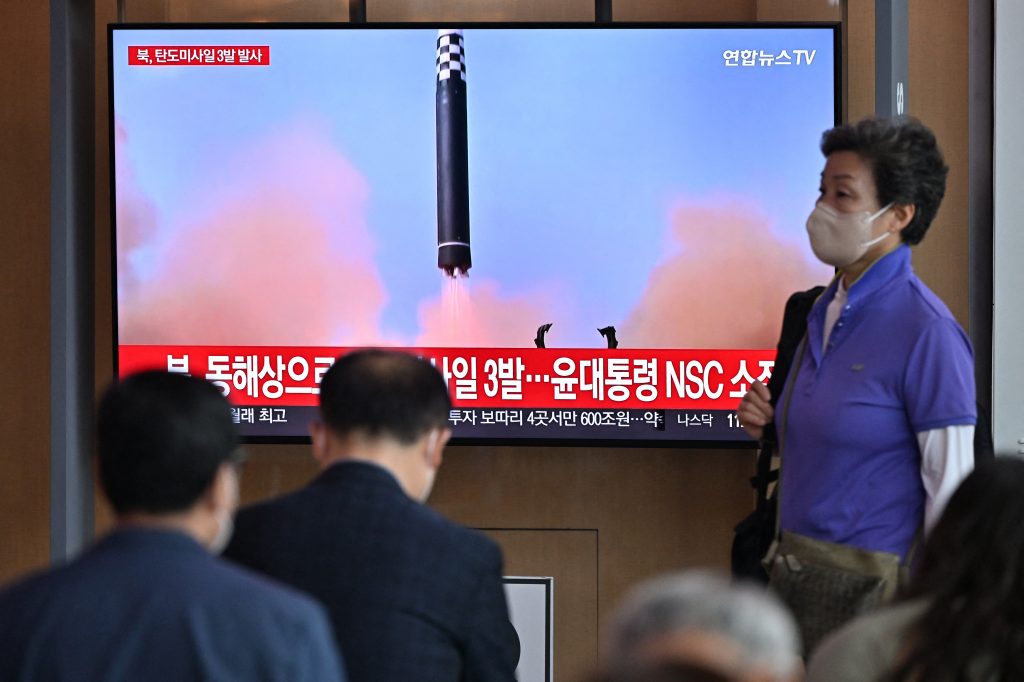
- ARAB NEWS
- 19 Apr 2024

SEOUL: North Korea fired three ballistic missiles toward the Sea of Japan from an area including Pyongyang Sunan International Airport on Wednesday morning, South Korea’s Joint Chiefs of Staff said.
They are believed to have included an intercontinental ballistic missile and a short-range ballistic missile, according to the South Korean government. Pyongyang may have again tested its new Hwasong-17 ICBM, which was test-fired in March this year.
The Japanese government detected North Korea’s firing of at least two missiles, which fell into waters outside Japan’s exclusive economic zone. Tokyo is looking into the possibility of another missile having been launched.
The latest missile launches were apparently intended to coincide with the completion of U.S. President Joe Biden’s trip to South Korea and Japan through Tuesday. During Biden’s talks with Japanese Prime Minister Fumio Kishida and South Korean President Yoon Suk-yeol, held separately, the leaders affirmed the importance of Japan-U.S.-South Korea cooperation in responding to North Korea’s threats.
According to the South Korean military, North Korea fired the ballistic missiles on three occasions, one at a time, around 6 a.m. (9 p.m. Tuesday GMT), around 6:37 a.m. and around 6:42 a.m.
The missile fired around 6 a.m. is believed to have been an ICBM, traveling about 360 kilometers and reaching a maximum altitude of some 540 kilometers. The missile launched around 6:37 a.m. disappeared after reaching an altitude of about 20 kilometers, while the one fired around 6:42 a.m. flew some 760 kilometers with a maximum altitude of about 60 kilometers.
On Wednesday, the South Korean military and U.S. forces stationed in South Korea conducted a missile firing exercise, each launching a surface-to-surface missile toward the Sea of Japan.
Also, the South Korean Air Force carried out a so-called “elephant walk” drill, in which more than 30 F-15K fighter jets were placed on standby on a runway, demonstrating its attack capabilities with the aim of containing North Korea’s further provocations.
In Washington on Tuesday, the White House said that U.S. National Security Adviser Jake Sullivan spoke by phone with his South Korean counterpart, Kim Sung-han, and that they both condemned North Korea’s destabilizing ballistic missile tests and committed to continue building on their close coordination. Sullivan also reaffirmed the United States’ steadfast commitment to the defense of South Korea.
The South Korean military, believing that North Korea has already completed its preparations for conducting a nuclear test, had been exercising vigilance together with Japanese and U.S. authorities against the possibility of such a test or an ICBM launch being carried out during Biden’s trip to South Korea and Japan.
Japanese Defense Minister Nobuo Kishi said that the missile firing “violates U.N. Security Council resolutions and we strongly condemn it.” The Japanese government lodged a protest with North Korea through its embassy in Beijing.
Kishida instructed government officials to collect relevant information, provide necessary information to the public and ensure the safety of aircraft and ships.
Pyongyang fired three short-range ballistic missiles toward the Sea of Japan also on May 12.
JIJI Press